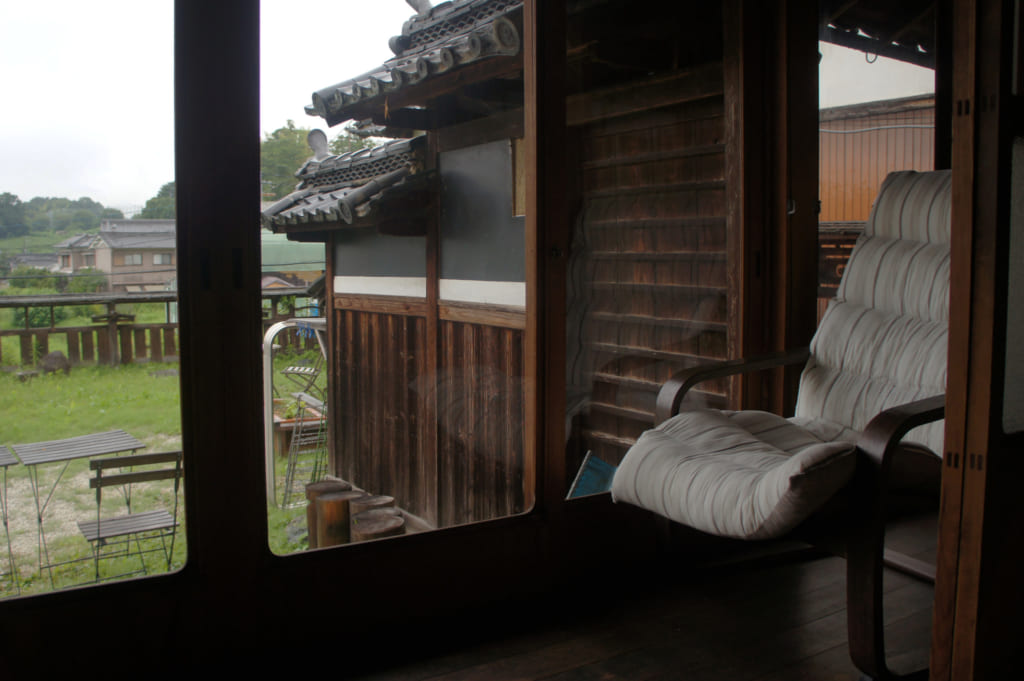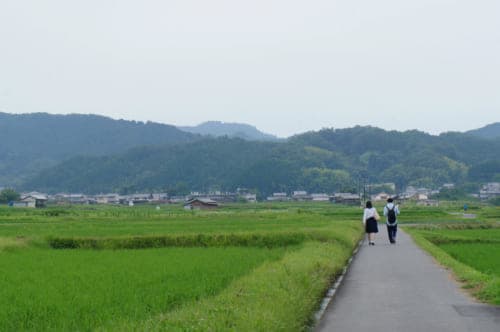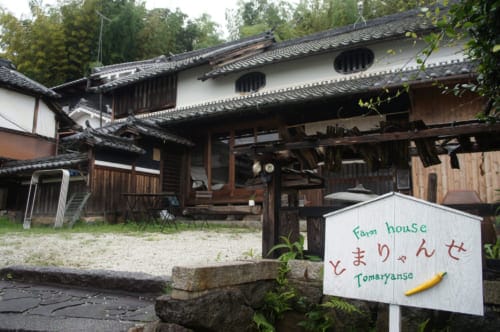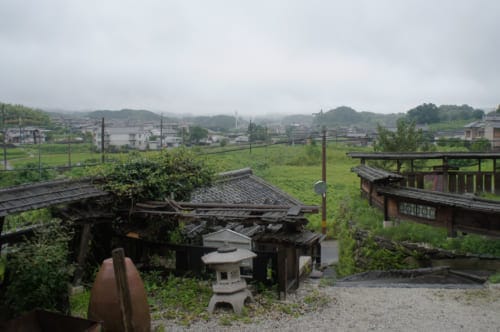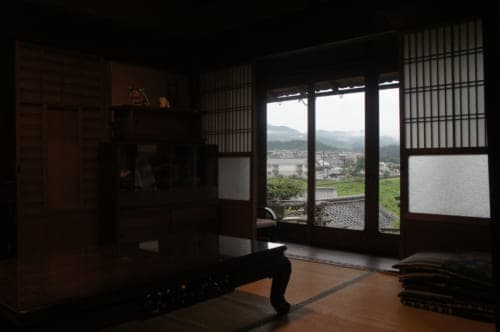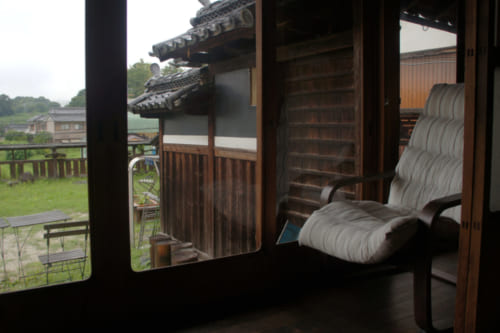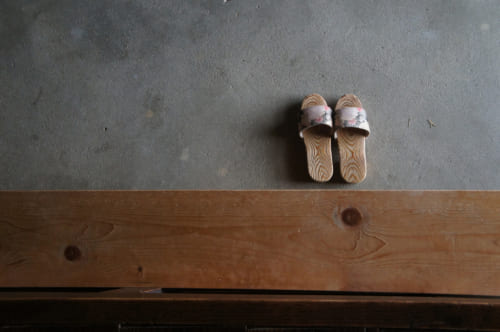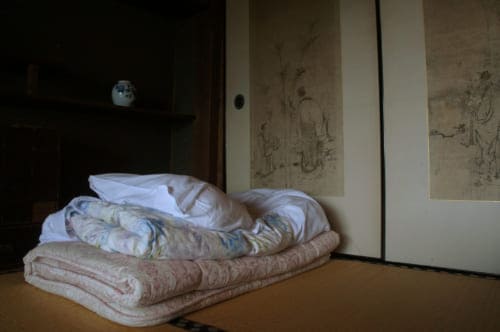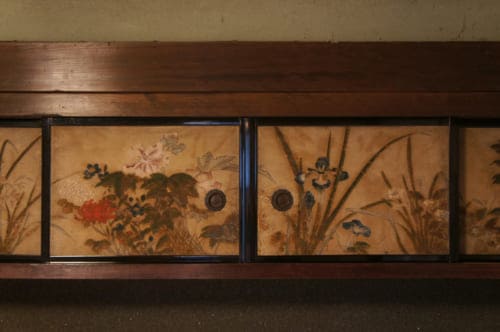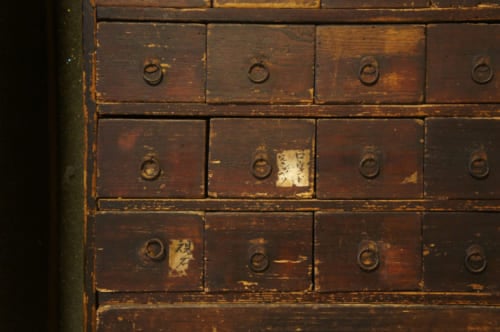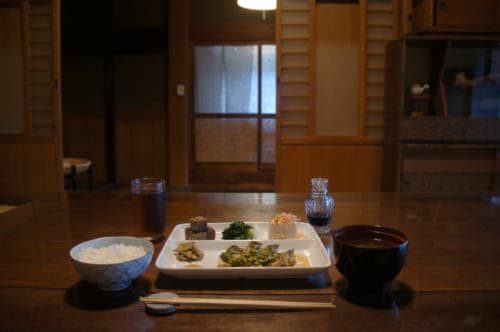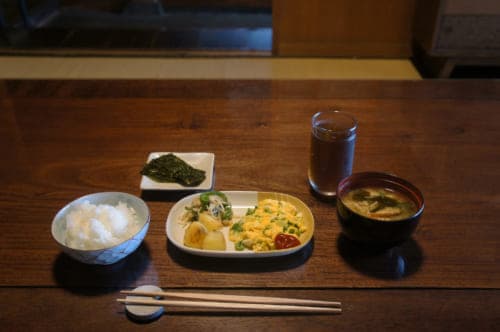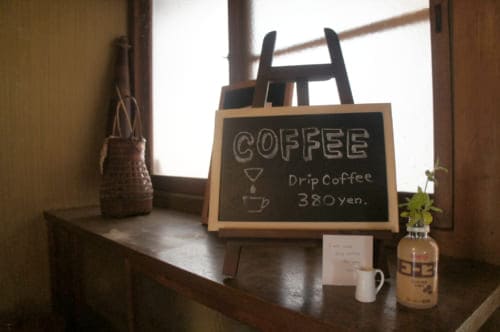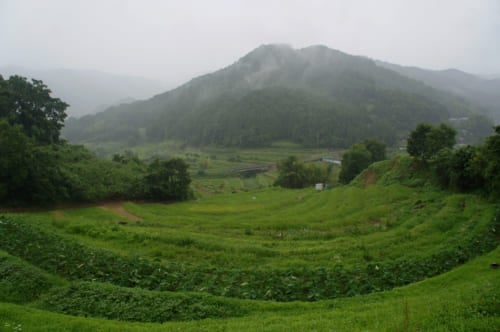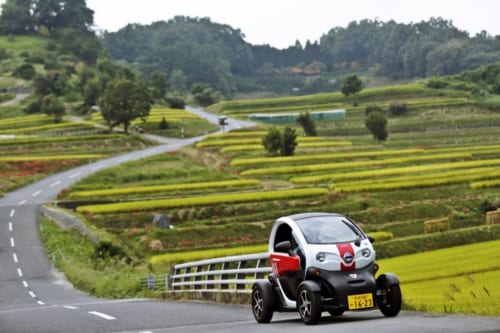Sponsored by Asuka Mura village, Nara
Asuka (飛鳥) is a small village located less than 30 kilometers from Nara city. Because there are many beautiful surprises in this village, I recommend staying there for at least one night, discovering the enchanting Nara Prefecture which exists beyond a typical visit to the great Buddha of Todai-ji and the famous deer park.
Indeed, Japan’s first capital was established in Asuka, and one can discover the beauty of the rural landscapes planted with rice fields and ancient sites of great historic value, including tumuli and archaeological sites dating back more than 1400 years, as well as the oldest Buddhist temples in the archipelago.
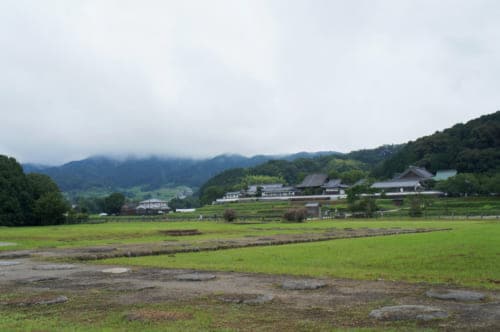
Tachibana-dera temple seen from the archaeological site of the ancient Kawahara-dera temple
A Farm stay at Tomaryanse
Asuka village and its surrounding areas are protected from development because of their great historical importance. As a result, despite its appeal to tourists, there is no large hotel that would spoil the view and the atmosphere of this quaint village. Lodging is therefore on a human scale, often located in old renovated buildings.
I was fortunate to stay at Farm House Tomaryanse, in a house that is over 200 years old and, in addition to its undeniable charm, has the advantage of being located less than a 10 minute walk from Asuka station.
Since the atmosphere of the village remains very rural, Tomaryanse has the benefits of being both conveniently located while retaining the feeling of staying at a farm in the heart of the countryside. In good weather, the small courtyard seems perfect to enjoy a coffee or a drink, but the rainy season got the better of me and I quickly relocated to the shelter indoors.
Even inside the house, there is an atmosphere that makes you want to relax and enjoy the moment. The interior is wonderfully preserved and seems completely timeless, with its dark woodwork patinated by the years, its floors covered with tatami with their familiar yet pleasant odor, and the beauty of the furniture, artifacts and antique trinkets that really give you the feeling of staying in a house full of history.
Tomaryanse: a traditional house filled with antiques
Those who love traditional houses, decorative art and Japanese antiques will be delighted in Tomaryanse. In every corner of the room where I stayed and the adjoining room where I ate my meals, I discovered real treasures, some of which are probably as old as the house itself: fusama decorated with ink paintings, vases, antique trinkets, a roller suspended in the tokonoma and furniture as elegant as they are full of history.
Home-cooked Meals with local products
A typical Japanese dinner is prepared using the farm’s own produce and other local products. I was able to savor, along with the essential bowl of farm-grown rice and miso soup: fish, tofu, konyaku, spinach and gobo (burdock), each more tasty and subtly seasoned than the last. Vegetarian, vegan and allergy-sensitive options are also available on request.
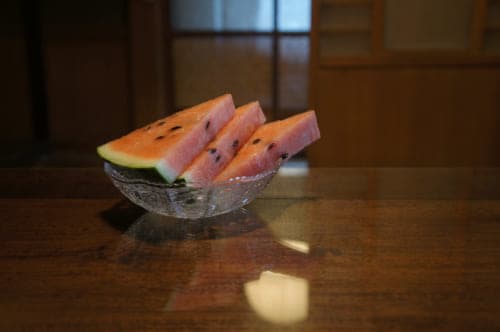
For dessert, the best that is available in summer: a fresh and sweet watermelon.
Breakfast was also homemade and prepared Japanese style, with rice and miso soup. But it was light, scrambled eggs and a few vegetables – without the typical grilled fish and raw egg, which are delicious but can be a bit heavy in the early morning.
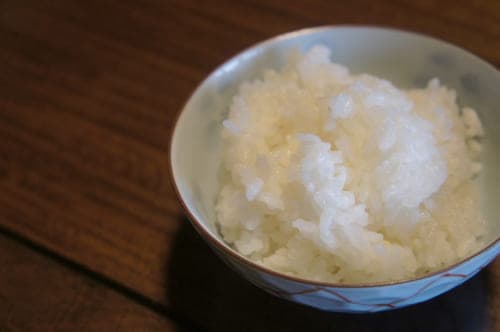
The fluffy and flavorful rice produced by the owners of Tomaryanse.
Discover the work of the fields in Asuka
The difference between a stay on the farm and a stay at a regular minshuku (a guest room) is the option of joining the owners to participate in working the fields. Given the season (mid-July), I was planning to go and harvest vegetables. But due to the long rainy season this year, we had to cancel. It was a pity because I was looking forward to sharing and discovering the soil with my hosts, but the unpredictability of the weather is simply another part of a farmer’s life!
Additional information
When staying at a farm, the host family sometimes treats the guest as a family member, sharing meals with them, for example. This was not the case here; though I was given a warm welcome, the hospitality was closer to that of a “classic” inn. Tomaryanse is an ideal accommodation for those who wish to stay in an authentic Japanese house, but fear having to communicate because of the language barrier, or those who simply like to enjoy their stay at their own pace.
For more information about Tomaryanse, visit the website Minpaku in Asuka (in English).
More information can be found on the Exploring Asuka website and on Asuka Navi (for a consultation in English on the phone). You can also download the brochure “Asuka, birthplace of Japan” available in pdf.
You can also follow @asukanavi on Instagram.
I also advise you to read the copy of the “naranara” guide dedicated to Asuka. You can easily find the paper version in Asuka but also download the pdf version (in English and Japanese).
Access and transportation
Asuka is located less than 50 minutes by train from Nara. From Kintetsu-Nara station, take the limited express train to Asuka station. Asuka stations is accessible in less than 80 minutes from Kintetsu-Kyoto or JR Osaka.
In Asuka, it is most convenient to ride a bike or in a mini electric car called michimo (rental is available near the station). It is also possible to walk or use the Asuka Aka Kame bus (schedules and information here in Japanese)


